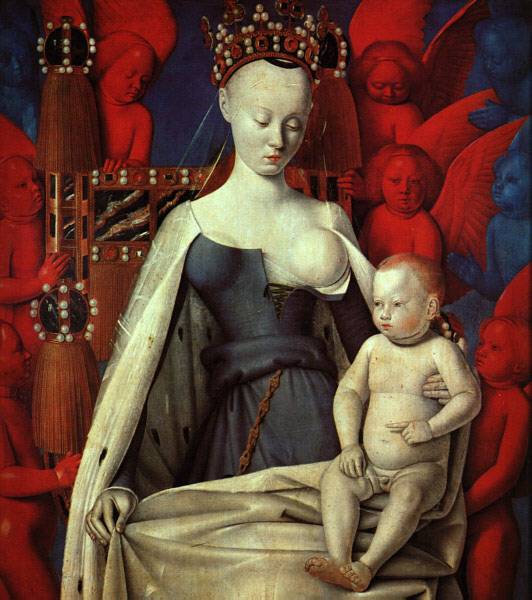 I have taken some grief in the past over my fascination with this painting. When I showed a plate of it to Mrs Bourgeois Surrender once she immediately got to the heart of the matter. "You like that girl, eh?" she asked, a little doubtfully, not particularly impressed with the subject. "She has a very, er, natural-looking body." But it is really a very remarkable picture, I pointed out, I have never seen anything remotely like it in its time period, and as to the lady, well...I've never seen anyone remotely like her either, yet...she is rather attractive...she seems as if she really could have existed...This greeted with a half-bemused, half-exasperated look and a pat on the head as if sense and insight were not to be expected in conversation with me.
I have taken some grief in the past over my fascination with this painting. When I showed a plate of it to Mrs Bourgeois Surrender once she immediately got to the heart of the matter. "You like that girl, eh?" she asked, a little doubtfully, not particularly impressed with the subject. "She has a very, er, natural-looking body." But it is really a very remarkable picture, I pointed out, I have never seen anything remotely like it in its time period, and as to the lady, well...I've never seen anyone remotely like her either, yet...she is rather attractive...she seems as if she really could have existed...This greeted with a half-bemused, half-exasperated look and a pat on the head as if sense and insight were not to be expected in conversation with me.Most critics comment on the improbable spacing of the lady's breasts and excessively melanin-challenged skin. I have not come across any who have anything to say about her hair.
As this is ostensibly supposed to be a representation of the Virgin, it could be argued that there was a failure of execution in the artist's purpose; for this lady makes one think of Mary mother of Jesus about as much as Kenny G does of Ivan the Terrible. One story has it that the lady is really Agnes Sorel, whom we recently encountered in the Joan of Arc stories, the reputed most beautiful woman in France and mistress of Charles VII. I would be satisfied with that.
Jean Fouquet seems to be the largely consensus choice for the greatest French artist of the 15th century. I don't know how much of an intellectual he was, but he certainly had a brilliant talent for painting, as well as a sensibility for the way painted objects might look that was well in advance of his contemporaries. The allure of his Marie/Agnes to me I think is the combination of the truly gorgeous and ostentatious clothing, including the crown, setting off the pleasing form, or importantly the idea of a pleasing female form that is insisted upon strongly here. The vivid colors of the cherubs that dominate the background contribute to this effect too; but none of it works if the temper and poise and suggested nature of the quaverings of the various parts of the lady's person are not right, and these are all right in this picture.


No comments:
Post a Comment